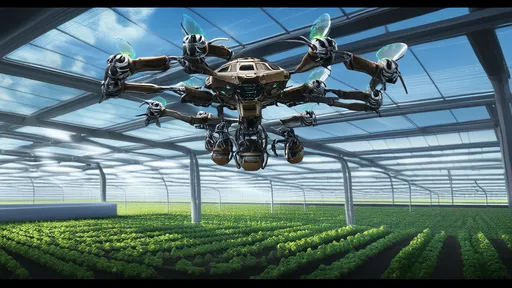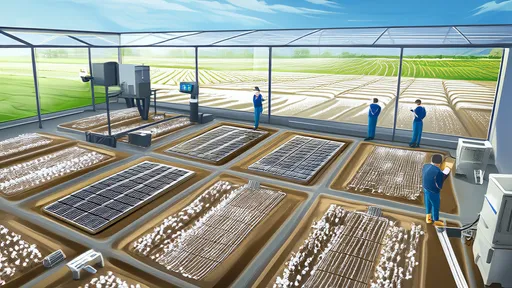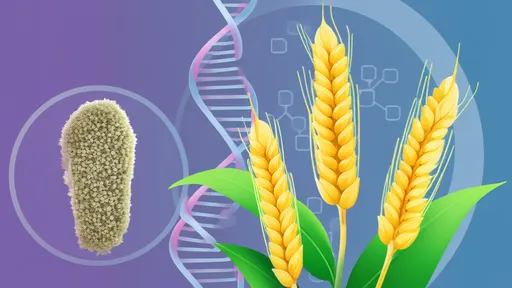The intersection of biotechnology and agriculture has reached a pivotal moment with the emergence of gene-edited wheat designed to resist mycotoxin contamination. This scientific breakthrough promises to reshape food safety protocols while addressing one of the most persistent challenges in global grain production. Unlike traditional GMOs that introduce foreign DNA, these next-generation crops utilize precise CRISPR edits to enhance natural defense mechanisms against fungal pathogens.
Mycotoxins—toxic compounds produced by molds like Fusarium—have long plagued wheat harvests worldwide. These carcinogenic substances not only cause billions in annual crop losses but also trigger severe health consequences when contaminated grain enters the food chain. Chronic exposure has been linked to liver cancer, immune suppression, and stunted growth in children. Despite rigorous fungicide applications and post-harvest monitoring, complete eradication of mycotoxins remains elusive under current agricultural paradigms.
The gene-editing approach targets Fusarium graminearum’s biological warfare at its source. Scientists have identified and strengthened wheat’s native resistance genes that inhibit fungal colonization. One particularly promising modification enhances the plant’s production of antimicrobial compounds called phytoalexins while simultaneously disrupting the mold’s ability to synthesize trichothecene toxins. Field trials in Kansas and Saskatchewan showed edited wheat varieties reducing mycotoxin levels by 98% compared to conventional strains during damp growing seasons.
Regulatory agencies face novel challenges in evaluating these crops. The USDA’s current stance treats gene-edited plants without foreign DNA as equivalent to conventionally bred varieties, bypassing years of transgenic approval processes. However, the European Food Safety Authority maintains a more cautious position, requiring extensive allergenicity and compositional studies. This transatlantic divergence could significantly impact global trade flows of edited wheat commodities in coming decades.
Consumer acceptance presents another critical hurdle. While CRISPR editing avoids the "Frankenfood" stigma associated with early GMOs, surveys indicate lingering public skepticism about manipulated food genomes. Agricultural biotech firms are countering this through transparency initiatives, including detailed public databases tracking edited crop lineages and open-access peer reviews of safety studies. The "clean food" branding strategy—emphasizing reduced chemical inputs and natural resistance mechanisms—appears to resonate particularly well with health-conscious demographics.
The economic implications are profound for developing nations where mycotoxin contamination disproportionately affects subsistence farmers. Nigerian agricultural economists estimate that widespread adoption of edited wheat could prevent $300 million in annual losses across sub-Saharan Africa alone. Humanitarian organizations are advocating for patent waivers that would allow local seed producers to cultivate edited varieties royalty-free—a proposition that has sparked heated debate within the agribusiness community.
Environmental benefits extend beyond food safety. Edited wheat’s reduced reliance on fungicides could decrease aquatic ecosystem contamination in major wheat-growing regions. Preliminary data from the Rhine watershed shows 40% lower azole fungicide concentrations downstream from test plots of edited wheat. This aligns with broader sustainable agriculture goals, potentially qualifying growers for carbon credit programs through reduced chemical production and application emissions.
As climate change increases humidity in traditional wheat belts, the demand for fungal-resistant crops will intensify. Gene editing’s rapid development cycle—often just 2-3 years from lab to field—positions it as a nimble solution compared to decade-long conventional breeding programs. Research consortiums are already working on stacked-resistance varieties that combat multiple fungal threats while maintaining high baking quality and yield characteristics prized by commercial millers.
The coming decade will test whether this technology can fulfill its dual promise of safer food supplies and more sustainable farming practices. Success will require unprecedented collaboration between molecular biologists, regulatory bodies, supply chain stakeholders, and ultimately, consumers voting with their grocery budgets. As harvests of edited wheat begin entering commercial channels this season, the world watches to see if this represents a turning point in humanity’s ancient struggle against crop contamination.

By /Jul 18, 2025

By /Jul 18, 2025

By /Jul 18, 2025

By /Jul 18, 2025

By /Jul 18, 2025

By /Jul 18, 2025

By /Jul 18, 2025

By /Jul 18, 2025

By /Jul 18, 2025

By /Jul 18, 2025

By /Jul 18, 2025

By /Jul 18, 2025

By /Jul 18, 2025

By /Jul 18, 2025

By /Jul 18, 2025

By /Jul 18, 2025

By /Jul 18, 2025

By /Jul 18, 2025